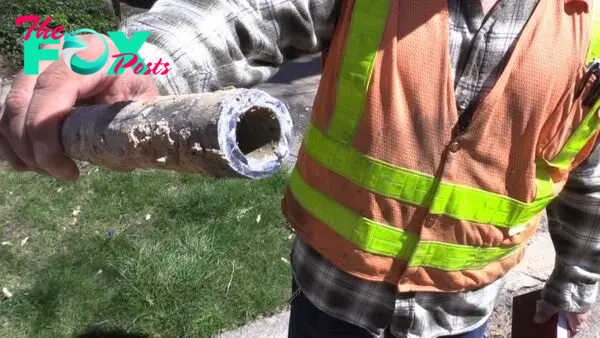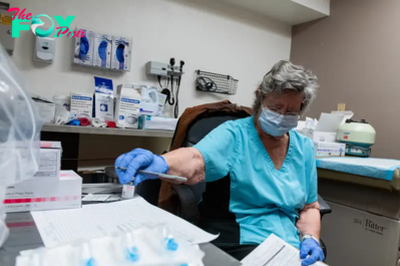Health
Colorado receives $32.8 million to replace decades-old lead pipes and improve drinking water systems
Utility companies, contractors, construction crews, plumbers and homeowners are working together to map the locations of every lead water service line in Colorado in an effort to help ensure the safety of the state’s approximately 900 community drinking water systems.
The maps should be delivered to the state health department by mid-October, creating a database of pipes, which connect the main water line to the household, that must be removed in the next 10 to 15 years.
☀️ READ MORE
At deadline for Cemex response to Boulder County termination, Cemex says igore a traffic study it paid for
A plan for Sweetwater Lake takes shape, minus an emphasis on calling it a state park
When Colorado’s legislature returns next year, there won’t by any Democratic lawmakers who were once in the minority
The mapping is part of a nationwide effort to keep drinking water free of lead contamination, which can cause serious health issues including irreversible brain damage in children.
Not all communities in Colorado have lead service lines, said Ron Falco, safe drinking water program manager for the Colorado Department of Public Health & Environment.
“In fact, we’re expecting the majority of our public drinking water systems in Colorado to be able to report to us that they do not have any lead service lines,” he said. “That can be because lead service lines were never used in that community or because they’re a newer community built after the lead ban went into effect in 1986. That’s good news from a health perspective and it’ll allow us to focus our lead service line removal efforts on a smaller number of systems.”
Lead was once commonly used to build water service lines in communities because it was cheap and flexible. But Congress banned the heavy metal from being used to build water pipes in the late 1980s after people realized corrosion can cause the chemical to seep into drinking water and cause health issues such as increased blood pressure, heart disease, decreased kidney function and cancer in adults.
Now, the federal government is providing funding to states to help remove and replace lead pipes with safer materials.
The most common sources of lead in drinking water are lead pipes and brass or bronze faucets and fixtures.
On May 2, the U.S. Environmental Protection Agency announced its plans to provide $32.8 million to Colorado to help the state identify and replace lead pipes.
The lead removal effort is in line with President Joe Biden’s Investing in America agenda, which aims to advance environmental justice and generate economic opportunities.
Biden has promised to replace every lead pipe in America to protect children and families.
The federal funds helping states to replace lead pipes come from the Bipartisan Infrastructure Law, which provided more than $50 billion to the EPA to help improve America’s drinking water, wastewater and stormwater infrastructure.

This is the third year Colorado and other states have received funding from the Bipartisan Infrastructure Law. The funding will be made available for at least two more years.
The $50 billion will be distributed to states that apply for it through the EPA’s Drinking Water State Revolving Fund program.
To qualify for a grant from the $50 billion fund, public water systems must complete planning, design and construction documents that meet the state revolving fund’s requirements. It typically takes about a year for companies or governments that provide water to complete the application process and receive funding.
The Bipartisan Infrastructure Law mandates that 49% of the money granted to the state revolving fund must be provided as grants and forgivable loans to areas overburdened by pollution that have been underinvested in for too long, such as communities of color and neighborhoods with many low income families, according to a news release from the EPA.
The EPA estimates there are 9 million lead services lines across the country, according to a recent assessment.
The agency is releasing a new memorandum that clarifies how states can use funding to most effectively reduce exposure to lead in drinking water and the agency has also developed new outreach documents to help water systems educate their customers on drinking water issues, health impacts of lead exposure and how residents can help identify potential lead service lines in their homes.
“No parent in America should have to worry about the water their kids drink,” said U.S. Sen. Michael Bennet of Colorado, a Democrat. “This investment from the Bipartisan Infrastructure Law is an important step forward to help communities across Colorado replace harmful lead pipes without placing additional financial burdens on homeowners and small businesses. Communities in every corner of the country should have access to clean drinking water.”
-

 Health4h ago
Health4h agoThe Surprising Benefits of Talking Out Loud to Yourself
-

 Health5h ago
Health5h agoDoctor’s bills often come with sticker shock for patients − but health insurance could be reinvented to provide costs upfront
-

 Health21h ago
Health21h agoWhat an HPV Diagnosis Really Means
-

 Health1d ago
Health1d agoThere’s an E. Coli Outbreak in Organic Carrots
-

 Health2d ago
Health2d agoCOVID-19’s Surprising Effect on Cancer
-

 Health2d ago
Health2d agoWhat to Know About How Lupus Affects Weight
-

 Health5d ago
Health5d agoPeople Aren’t Sure About Having Kids. She Helps Them Decide
-

 Health5d ago
Health5d agoFYI: People Don’t Like When You Abbreviate Texts


























